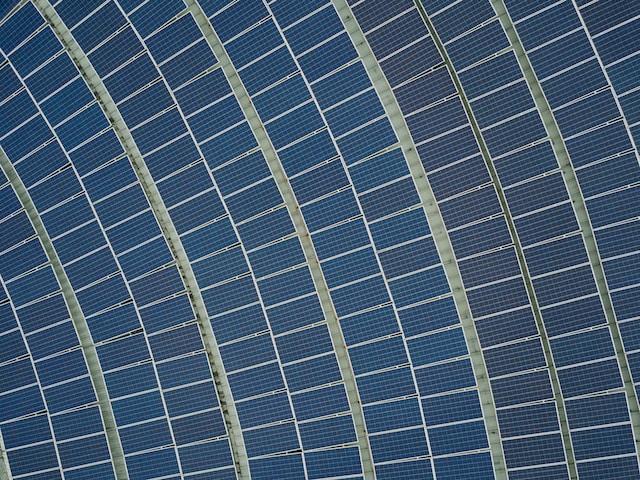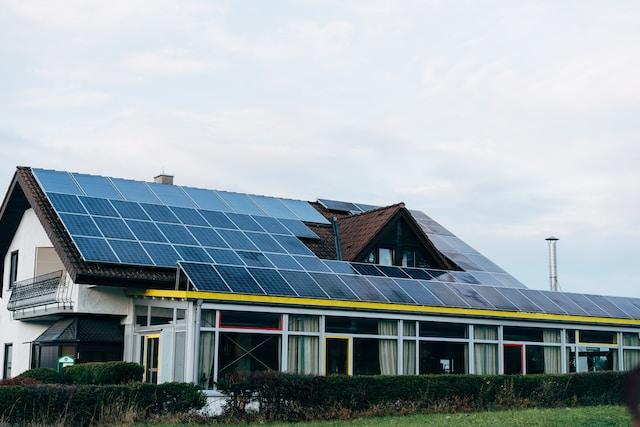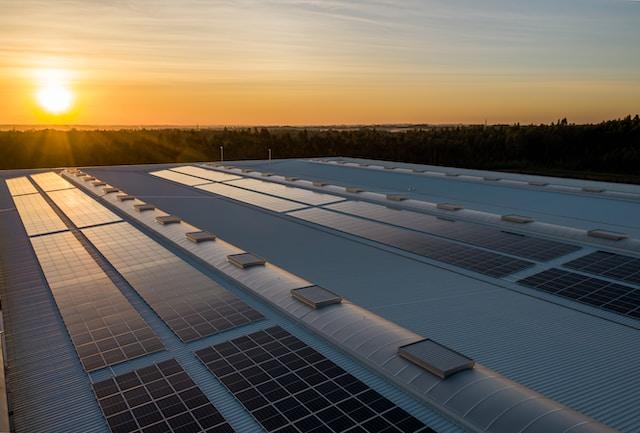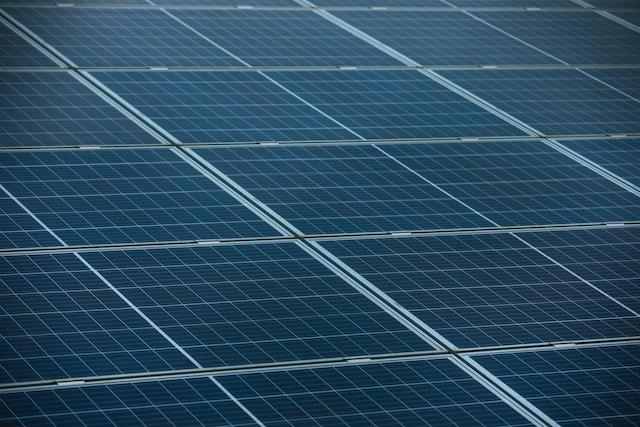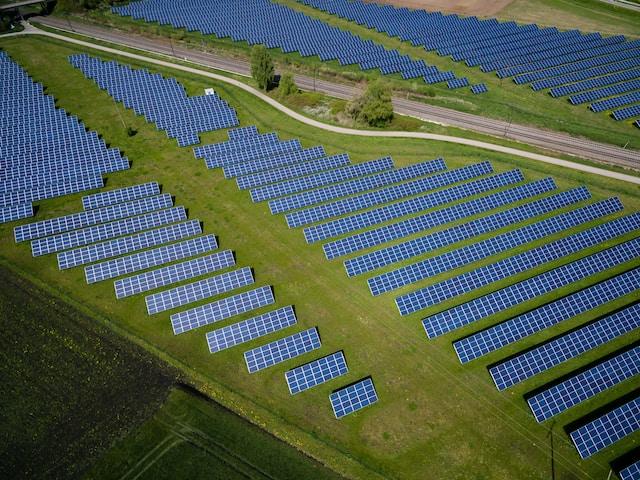
Grid-Tied Solar Panel Systems: Unleashing the Power of Renewable Energy for Your Home
Introduction
Welcome to our comprehensive guide on grid-tied solar panel systems, an increasingly popular choice among homeowners seeking a sustainable and cost-effective energy solution. As global concerns about climate change and rising energy costs continue to grow, many are turning to grid-tied solar panel systems to harness the power of the sun, ultimately reducing their carbon footprint and saving on utility bills. By seamlessly connecting to the existing electrical grid, these solar panel systems allow homeowners to generate clean energy while maintaining a reliable power supply. In this article, we will explore the ins and outs of grid-tied solar panel systems, delving into their numerous environmental and financial benefits. Our goal is to empower you with the knowledge and tools necessary to make an informed decision about whether a grid-tied solar panel system is the right choice for your home.
Understanding Grid-Tied Solar Panel Systems
In this section, we aim to provide you with a clear understanding of grid-tied solar panel systems, their basic components, and the numerous benefits they offer. A grid-tied solar panel system is a type of solar power installation that is connected directly to the existing electrical grid. This connection enables homeowners to generate electricity through solar energy, supplementing or even replacing their reliance on traditional utility providers. With its growing adoption, grid-tied solar panel systems have become an essential component of the renewable energy landscape. The fundamental components of a grid-tied solar panel system include solar panels, an inverter, and a connection to the electrical grid. Solar panels are responsible for capturing sunlight and converting it into direct current (DC) electricity. The inverter then plays a crucial role in converting this DC electricity into alternating current (AC) electricity, which is compatible with the electrical grid and can be used by household appliances. Finally, the grid connection allows any excess energy generated by the solar panels to be fed back into the electrical grid, often resulting in net metering credits that can help offset energy costs. Grid-tied solar panel systems work by utilizing solar energy to power a home while simultaneously remaining connected to the electrical grid. During peak sunlight hours, the solar panels generate electricity, which is either used directly by the household or fed back into the grid. At night or on cloudy days, when solar panels may not generate enough electricity to meet a home's energy needs, power is drawn from the grid to ensure a continuous supply. One of the primary benefits of grid-tied solar panel systems is the ability to participate in net metering programs offered by many utility companies. Through net metering, homeowners can receive credits for the excess energy they produce and feed back into the grid, which can help offset their monthly electricity bills. In addition to the financial benefits, grid-tied solar panel systems contribute to a greener environment by reducing reliance on fossil fuels and lowering greenhouse gas emissions. By harnessing the power of the sun, homeowners can significantly reduce their carbon footprint while enjoying the numerous advantages that come with clean, renewable energy.
Advantages of Grid-Tied Solar Panel Systems
As more and more people turn to renewable energy sources, it's essential to understand the numerous advantages of grid-tied solar panel systems. One of the most significant benefits for homeowners is the potential for significant cost savings on their energy bills. By generating electricity through solar panels, homeowners can reduce their reliance on utility-provided power, leading to lower monthly energy costs. The more energy the solar panels produce, the less energy needs to be purchased from the grid, resulting in greater savings. A crucial aspect of these cost savings comes from the concept of net metering, a billing arrangement that allows homeowners to receive credit for excess solar energy fed back into the grid. Under net metering, any surplus electricity generated by the solar panels is sent to the grid, and the homeowner's utility account is credited at the same rate they would typically pay for grid-supplied electricity. These credits can then be applied to offset future energy costs when the solar panels are not producing enough electricity to meet the household's demand, such as during nighttime or overcast days. Net metering not only makes solar energy more financially attractive but also encourages the adoption of renewable energy sources by making it more affordable for homeowners to invest in solar panel systems. Aside from the financial incentives, grid-tied solar panel systems offer significant environmental benefits. The adoption of solar energy reduces our reliance on fossil fuels, which in turn leads to a decrease in greenhouse gas emissions and air pollution. By generating clean, renewable energy from the sun, homeowners can actively contribute to the fight against climate change and help create a more sustainable future. Additionally, solar power is a virtually inexhaustible resource, meaning it will not contribute to the depletion of finite natural resources like coal, oil, or natural gas. In summary, grid-tied solar panel systems provide numerous advantages, from substantial cost savings on energy bills to the environmental benefits of reducing greenhouse gas emissions and reliance on fossil fuels. By investing in solar energy, homeowners can enjoy both immediate and long-term rewards, making grid-tied solar panel systems an increasingly popular choice for sustainable living.
Installation and Cost Considerations
When considering a grid-tied solar panel system for your home, it's important to understand the installation process and the various factors that can influence the overall cost of the system. A typical installation begins with a thorough assessment of your home's energy needs, solar potential, and available roof space. This evaluation helps determine the optimal system size and layout to ensure maximum efficiency and return on investment. Once the design is finalized, professional installers mount the solar panels on your roof, connect them to an inverter, and integrate the system with your home's electrical grid. The entire process can take anywhere from a few days to a couple of weeks, depending on the complexity of the installation. Several factors can influence the cost of a grid-tied solar panel system, including the size and quality of the solar panels, the inverter type, installation complexity, and any additional equipment or upgrades required. Additionally, labor costs, permitting fees, and potential modifications to your home's electrical system can also impact the overall price. It's essential to obtain multiple quotes from reputable solar installation companies to compare prices and ensure you're getting the best value for your investment. To reduce costs and maximize your return on investment, consider the following tips:
Research available federal, state, and local incentives, tax credits, and rebates that can help offset the initial cost of the system.
Evaluate the efficiency of the solar panels, as higher-efficiency panels can generate more electricity and lead to greater long-term savings.
Choose a reputable solar installation company with a proven track record, as a well-designed and properly installed system can improve performance and reduce maintenance costs.
Opt for a system size that aligns with your home's energy consumption to avoid overspending on panels that produce more electricity than you need.
Regularly maintain and monitor your solar panel system to ensure optimal performance and address any potential issues promptly.
By considering these factors and taking advantage of available incentives and rebates, you can reduce the initial costs of your grid-tied solar panel system, making it a more affordable and sustainable solution for your home's energy needs.
Maintenance and Troubleshooting
One of the key advantages of grid-tied solar panel systems is their relatively low maintenance requirements. However, to ensure optimal performance and maximize the lifespan of your solar panel system, it's essential to carry out regular maintenance checks and address any potential issues promptly. In this section, we will discuss the general maintenance requirements for grid-tied solar panel systems, common issues that may arise, and tips for proper system upkeep. General maintenance for grid-tied solar panel systems mainly involves keeping the panels clean and free of debris, as dirt and dust can accumulate over time and reduce their efficiency. In most cases, rainwater will naturally clean the panels, but if you live in an area with low rainfall or high levels of dust and pollen, you may need to clean them manually or hire a professional solar panel cleaning service. Additionally, it's important to regularly inspect your system for any signs of wear and tear or damage, such as loose connections, damaged cables, or malfunctioning inverters. Some common issues that may arise with grid-tied solar panel systems include:
Reduced power output due to dirty or shaded solar panels. To address this issue, clean the panels regularly and ensure they are free of shade from nearby trees or structures.
Inverter malfunction or failure, which can prevent the conversion of DC electricity to AC electricity. If your inverter is not functioning correctly, contact a professional solar technician for diagnosis and repair.
Degradation of solar panel performance over time. While solar panels are designed to last for 25 years or more, their efficiency may decrease gradually. Monitor your system's output regularly and consider replacing panels if their performance declines significantly.
To maximize your grid-tied solar panel system's lifespan and ensure proper upkeep, follow these tips:
Schedule regular inspections and maintenance checks, at least once or twice a year, to identify and address potential issues early on.
Monitor your system's performance using available monitoring tools or applications to track its efficiency and detect any anomalies.
Keep a record of all maintenance activities and repairs, as this can be helpful for warranty claims or future troubleshooting.
By adhering to these maintenance and troubleshooting guidelines, you can ensure your grid-tied solar panel system continues to operate efficiently, providing you with clean, renewable energy for years to come.
Incentives and Rebates for Solar Energy Adoption
One of the key drivers behind the growing adoption of solar energy is the array of federal and state incentives available for homeowners installing solar panel systems. These incentives and rebates can significantly offset the initial cost of installation, making solar energy a more accessible and affordable option for many households. At the federal level, the Investment Tax Credit (ITC) allows homeowners to claim a percentage of the cost of their solar panel system as a tax credit. While the exact percentage may change over time, the ITC can result in substantial savings for those investing in solar energy. Many states also offer additional incentives, such as property tax exemptions, sales tax exemptions, and state-level tax credits. Some utility companies provide further rebates or net metering programs, which allow homeowners to receive credits for excess energy fed back into the grid. To fully understand the available incentives in your area, it's essential to research your state and local programs, as these can vary significantly between regions. By taking advantage of these incentives and rebates, homeowners can substantially reduce the upfront cost of a solar panel system, making it a more viable and financially attractive option. The combined benefits of lower energy bills, increased property value, and reduced environmental impact make solar energy adoption an increasingly popular choice for homeowners looking to make a smart, long-term investment in their property and a sustainable future.
Conclusion
In conclusion, grid-tied solar panel systems offer numerous benefits for homeowners looking to make a sustainable and cost-effective switch to renewable energy. By harnessing the power of the sun, these systems can result in significant savings on energy bills, reduce reliance on fossil fuels, and lower greenhouse gas emissions. Additionally, federal and state incentives, along with utility rebates, make solar energy adoption more accessible and affordable than ever before. As a homeowner, investing in a grid-tied solar panel system can also increase the value of your property and contribute to a cleaner, greener future. We encourage you to explore the possibilities of renewable energy and consider making the switch to solar power. To learn more about solar panel installation options and determine the best solution for your home, don't hesitate to consult with reputable solar installation professionals and start your journey toward sustainable living today.
Apr 4, 2023
Share:
Fresh off the Press
Continue reading
Newsletter
Your journey towards a sustainable lifestyle starts here!
Join our newsletter for the latest on solar panels and clean energy breakthroughs.

